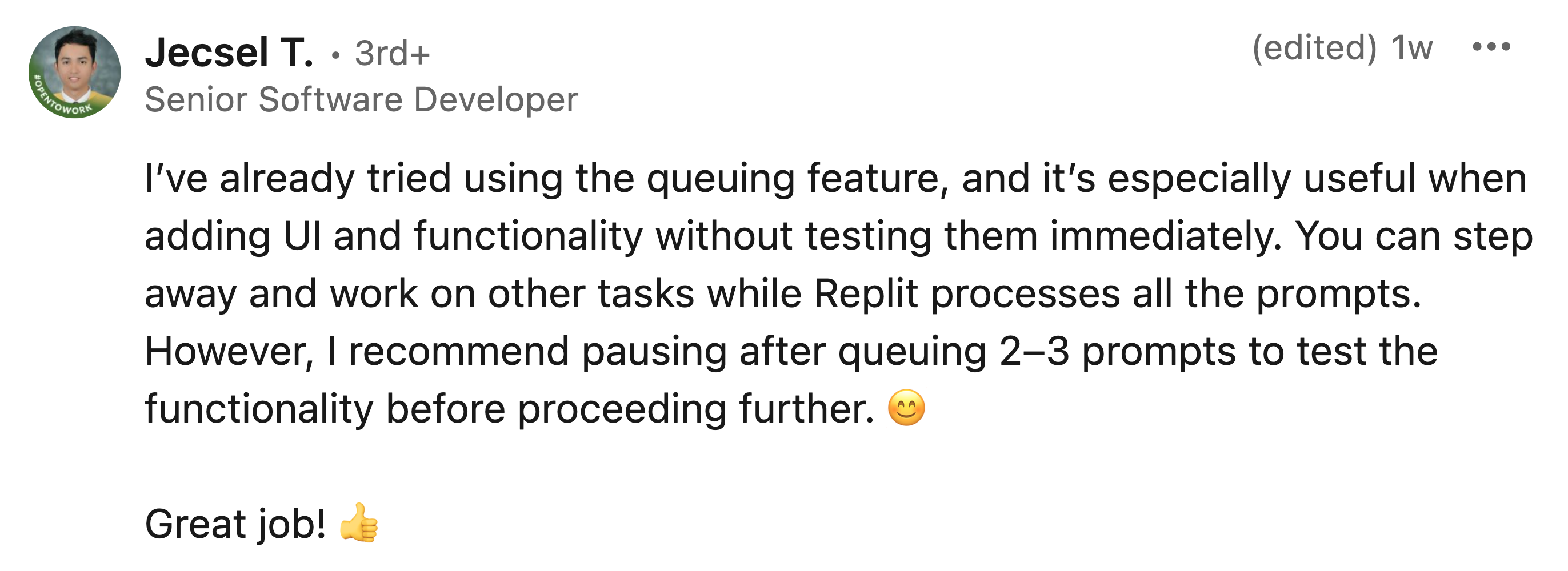
Replit wants to help prototypers work more efficiently with its AI software-building agent, launching a new feature called Queue that lets users stack, reorder, and automate coding tasks.
As its name suggests, Replit’s new tool enables users to “queue” up multiple tasks via prompts while the agent is still working on earlier ones. For example, a user might first ask the agent to switch an app’s color scheme, and while that’s in progress, line up additional instructions to display a welcome message on the homepage, add a login button, and save user accounts.

It’s all about bringing structure to multi-task AI development, allowing developers to queue tasks, adjust their order, and iterate mid-build. They can also pause the active task to test or debug, before the next queued instruction begins.
While Queue allows developers to queue up multiple prompts at once, some recommend a more measured approach: pausing after a few tasks to check results before proceeding. This helps catch errors early, and keep the agent on track.

This relates to other concerns raised by the community, that queuing up different types of tasks within the same chat thread could blur context, an issue that is compounded as more tasks are added to the pot.
For example, when switching between database work and UI design, will the agent stay focused on each task individually, or might it become confused if the developer switches topics or tries to follow up later?


Pausing might help catch execution issues, but it doesn’t fully address the need for clearer task separation. Features like isolated threads or scoped prompts could help keep the agent grounded in more complex, multi-domain workflows.
Queue addresses a key friction point for AI-native software developers: the stop-start nature of interacting with agents one prompt at a time. By allowing multiple instructions to be stacked and managed as a sequence, developers can stay focused on other work as the agent whirs in the background.
A happy by-product of all this is that AI agents begin to feel less like a black box, and more like a collaborative team member that can execute and adapt to tasks under light supervision.
That said, as workflows grow more complex, the risk of context loss (particularly across unrelated tasks) could still prove problematic, and may require more explicit task boundaries or agent memory controls.